The visitors to the farm this week have been as great as any of our peak weeks during the summmer. We adopted out the llama boys that I picked up about a month ago. These llamas found a perfect home. I walked them in the back of a mini=van.....They dont call me the "Llama Whisper" for nothing (sorry Alex). Very few other animal have been in or off of the farm. It is the holidays and people dont get or dispose of animals during the holidays.
The weather has been good, things have been uneventful...until this morning.
This morning I walked into the barn....did a quick look over, everything looked normal. The HS guys that help me out hadnt showed up yet (they have been great helping out all over break)and I started chores. I ran the hay up on the hill for the horses and let them out of their stalls. I got the dogs out into the kennel.
I took two bales of hay down into the new wing of the barn for the llamas, sheep and goats. As I was filling hay racks, I noticed something moving in the hay below my feet. I thought that it looked like a rabbit with some babies but upon investigation I quickly discovered that it was one of the potbelly pigs that I had rescued a few months back. This pig is literally the size of a large bunny. How this was happening I dont get, she must have been bred at 3 months old. I dont have any male intact pigs at the farm.

This little sow has never been friendly, she quickly took off down the barn, leaving her nest and piglets behind. I quickly built a temp. pen around her nest where other animals couldnt step on her babies and then tried to figure out how I was going to get her into it. Let me tell you one thing about Potbelly pigs, no one wants to adopt them. The second thing, they can run like hell when a large man is chasing them.
Which is what I preceded to do. As the pig (the size of a cocker spaniel) was running she was dropping piglets out. As she was leaving a living easter egg hunt I chased her. I was picking up the piglets, cleaning off their snouts and once I knew that they were fine as I stuffed them into my jacket pocets because they were squealing like....well pigs.
I normally have a small army at the farm of volunteers....where were they now? As I was chasing a pig the size of my cat around the barn.
I eventually caught the pig, got it into its nest with all of the piglets she had there and the ones that I had picked up while getting her back there. They were happy to be there, I checked on them all day long and all refused to move....Then I got thinking, yeah, dangerous. When I rescued that little piglet, she had a sister. I got to thinking that if her sister had babies at 8 months old (or younger), then she was probably going to be pregnant also.
The key here is to remember that I had survived the entire episode myself, alone, no help....Things were different by this point....As I stood haggard, gasping, covered with really gross ambriotic fluids....my HS kids arrived. I quickly built another pen and we (along with a great BOD member that happened to stop by)chased the potential sow down and put her in the pen next to her sister.
All are resting comfortably, along with the 2 new goats that arrived this afternoon. I felt comfortable enough to leave the farm (with my favorite farm daughter/babysitter Kayla holding down the fort) to go see some great friends Bryan and Katie that were visiting from Ca..
December and January are always 2 horrible months for me. December I reflect at all of the horrible (and good) things that Ive seen in the animal world in the last year. In Jan. I try to get psyched up for all of the mid-winter rescues I do. I really do look forward to 2008, new rescues, and new goals for this place.
Hopefully without any unexpected delieveries. ...Wes











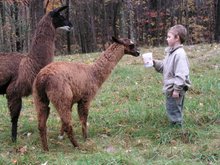
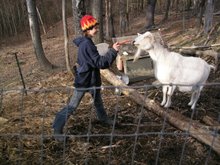

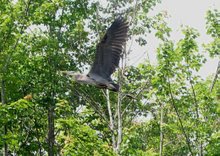

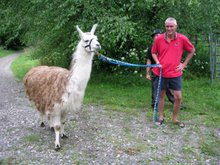
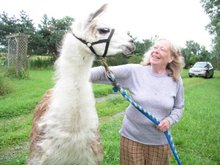
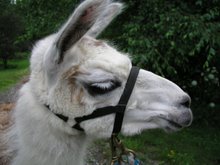








No comments:
Post a Comment